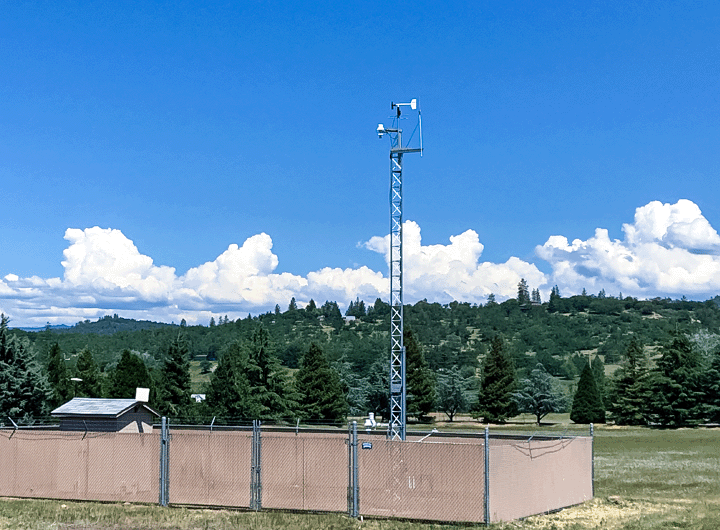Thought Leadership
EPA Is in Town… Are You on Their List?

You may or may not have heard that EPA Region 10 is currently conducting RMP and EPCRA compliance inspections in the Pacific Northwest. After providing guidance to a few clients who are facing an upcoming inspection, I realized it might be helpful to send a broader message to answer common questions and provide some helpful tips.
Wait…what are these RMP and EPCRA inspections anyway?
The purpose of the inspection is to determine compliance with the Clean Air Act (CAA) Section 112(r) known as the Risk Management Program (RMP) and the Emergency Planning and Community Right-to-Know Act (EPCRA) Sections 302, 311, and 312, known as the Annual Chemical Inventory Reports (Tier II).
How do I know if I’m going to be inspected by EPA?
EPA sends letters to the facility approximately two weeks before the scheduled inspection. The letter will be addressed to the person responsible for implementing the RMP as identified on the most recent RMP submittal. You should check Item 1.7 on your most recent RMP submittal and ensure that the contact information is current. If that information is outdated, it’s possible that EPA has sent your facility a letter and you don’t know it.
What should I expect if I get inspected by EPA?
EPA provides a lot of information in the notification letter to help you prepare for an inspection. The logistics typically include an opening conference with a team of four to six inspectors, an opportunity for you to provide EPA with an overview of your operation and a safety briefing, a site walk, a document review, and a closing conference. The duration of the inspection depends on the complexity of your process and the state of your program. I’ve seen some inspections wrap up in less than three hours, and some inspections take the whole day.
How can I prepare for an EPA inspection of my RMP and EPCRA compliance?
Ideally, you shouldn’t need to do anything special to be ready for an EPA inspection. Staying in compliance is your best preparation. If you’re not in that ideal situation, here are some tips:
- If you are unfortunate enough to have a history of past RMP or EPCRA citations, you should absolutely ensure that those items have been fully corrected.
- Make sure your Tier II report is current and accurate.
- Review your last two compliance audit reports and close out as many open recommendations as possible. Ensure that there is a scheduled target date assigned to any items that you can’t close before the inspection.
- Review your previous process hazard analysis reports and close out as many open recommendations as possible. Ensure that there is a scheduled target date assigned to any items that you can’t close before the inspection.
- Make sure your information is current and organized. The EPA letter includes a list of documents that you should have readily available. Please note that the most recent EPA letter emphasizes the importance of compiling training records for both facility staff and contractors who work on or around the regulated process.
- If many of your documents are in digital format, you should provide computers for each member of the inspection team to efficiently access your files. Avoid giving access to files that have not been requested.
- If you believe you’re significantly out of compliance, you should contact an attorney who specializes in RMP and EPCRA before the inspection even starts. Even if an attorney can’t prevent EPA from issuing valid citations, they can help you understand your options, develop a good strategy to protect your rights, and minimize the pain.
What should we do during the RMP and EPCRA inspection by EPA?
First and foremost, you must be truthful. I know it’s not pleasant to admit that things aren’t perfect. However, you would enter an entirely different world of unpleasant if you tried to mislead EPA about anything during the inspection. This point is so important that I’m going to say it again: Be truthful.
Keep your answers focused and respect the value of everyone’s time. If you are asked about operator training, it’s probably not appropriate to dive into your thoughts about process safety information. For this same reason you should avoid providing access to files that have not been requested.
If possible, you should have several knowledgeable people available during the inspection to provide the requested information. The EPA team will simultaneously review several different documents, and it might be difficult for one person to immediately respond to questions. If you don’t have more than one or two people at your facility who know your program, it might be helpful to have a knowledgeable consultant participate in the inspection.
If feasible, correct any alleged violations identified by the inspection team during the inspection. For example, you might be able to make minor updates to written documents, conduct and document an eyewash/safety shower inspection, or replace a missing valve tag in just a few minutes.
You should take careful notes during the inspection and take photos of everything that was photographed by the inspection team. During the closing conference, you should document the preliminary findings and potential violations.
What should we do after the RMP and EPCRA inspection?
Consider debriefing with all the people involved with the inspection (including the legal team, if applicable) to ensure that you have all the information. Develop your list of action items.
If all the requested documents weren’t available during the inspection, you should be prepared to compile and provide those documents promptly after the inspection. If warranted, the inspection team should provide you with a list of requested documents during the closing conference. If feasible, you should promptly correct alleged violations and provide evidence of your corrective actions before EPA issues a citation.
Maintaining long-term, ongoing compliance is always the best way to prepare for an inspection. Remember that we’re here to help if you have any questions or want help with your compliance programs.
About the Author
Bill Beadie, CIH, is Principal Industrial Hygienist at MFA with more than 25 years of experience helping facilities manage exposure risks, develop safety programs, and train employees to navigate OSHA and EPA requirements.
Contact Us
General Inquires
Thank you for your interest in MFA! Whether you are looking to inquire about a project or are interested in learning more about our services, please reach out to the MFA Team!





